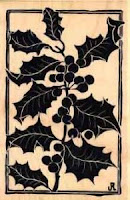Color in the Landscape
 |
| LS Color draws attention |
Human response to color
in flower, fruit or leaf is deep and emotional. Color is therefore one of the
most compelling plant characteristics used to create interest in the landscape.
While landscapers use many design tools such as texture, form, repetition and symmetry
as well as hardscaping to create dynamic landscapes, a colorful container, a brilliant
annual bed or an appealing bright rosebush loaded with flowers automatically
draws attention to that particular spot. This means of creating interest is useful
in landscape design to direct visitors to the leasing office or to indicate the
way to the pool or recreational area. Heads turn as people are drawn to color.
Colorful plants distinguish
themselves from the background mass of greenery in most landscapes, emerging to
take front stage. However, vibrant flower color in plants is often short-lived
or fleeting, for example, as shrubs bloom during a brief period of the year and then revert to green the rest of the time. In addition, fewer colorful flowers bloom in the
shade (about 80% in sun but only 20% in shade) and designers must turn to other
sources of plant color.
Variegated Foliage
 |
| Twist of Lime(TM) Abelia |
When looking to enliven the myriad shades of garden
green, colorful variegated foliage is the method of choice. One of the finest variegated shrubs for sun or shade, Twist of Lime ™ Abelia is flowering shrub with interest 12
months a year and attractive white flowers/sepals about 6 months!
Twist of Lime™ Abelia by Garden Debut(R) has
many landscape uses, as a specimen or grouped in shrub borders or foundations.
It is also effective when massed as a shrubby groundcover, particularly on
banks where plants can also provide erosion control, This moderate grower may
be used as a low, informal hedge in southern areas where winter die-back is not
a concern, although plants lose their attractive graceful shape if pruned or
sheared. Twist of Lime™ Abelia is also a creative choice for permanent containers
on terraces or balconies.
What is your favorite variegated landscape mainstay?









.jpg)




































